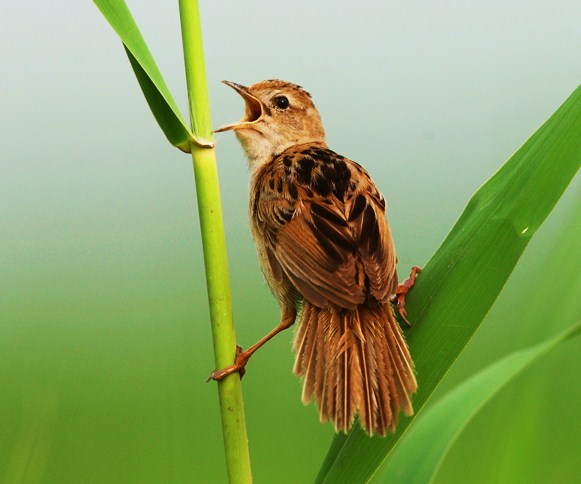Megalurus pryeri
 |
| (Photo from Yang Niao) |
Common name:
marsh grassbird (en); cigarrinha-do-Japão (pt); mégalure du Japon (fr); yerbera japonesa (es); riedsänger (de)
Taxonomy:
Order Passeriformes
Family Sylviidae
Range:
This Asian species breeds in the island of Honshu, Japan, in north-eastern China and possibly also in neighbouring parts of Russia and Mongolia. They winter further south in Japan and in the Yangtze River basin in south-eastern China.
Size:
These birds are 13-14 cm long and weigh 14-16 g.
Habitat:
Marsh grassbirds prefer dense, mid-height reeds and grasses in shallow water for nesting, with some taller plants for singing posts. They are very sensitive to habitat structure and do not tolerate vegetation that is too short or too tall. They winter in reedbeads.
Diet:
These birds eat small insects including bugs, beetles, soft insects, grubs and capsular larvae from reed sheaths.
Breeding:
The marsh grassbird breeds in June-August. The nests are built up to 35 cm above the ground, in sedges or Japanese pampas grass Miscanthus sinensis. There the female lays 5-6 eggs which are incubated for 11-12 days. The chicks fledge 13-14 days after hatching. Each pair may produce 1-2 clutches per year.
Conservation:
IUCN status – NT (Near-Threatened)
This species has a moderately small population of just 10.000-15.000 individuals, which is divided into a number of isolated sub-populations over a relatively small breeding range. The population is suspected to be declining as a result of habitat degradation and conversion in both breeding and wintering areas, caused by agricultural expansion, oilfield development, reed harvesting for pulp, and alteration of water-levels through irrigation. Pollution and hunting are also potential threats in China.







